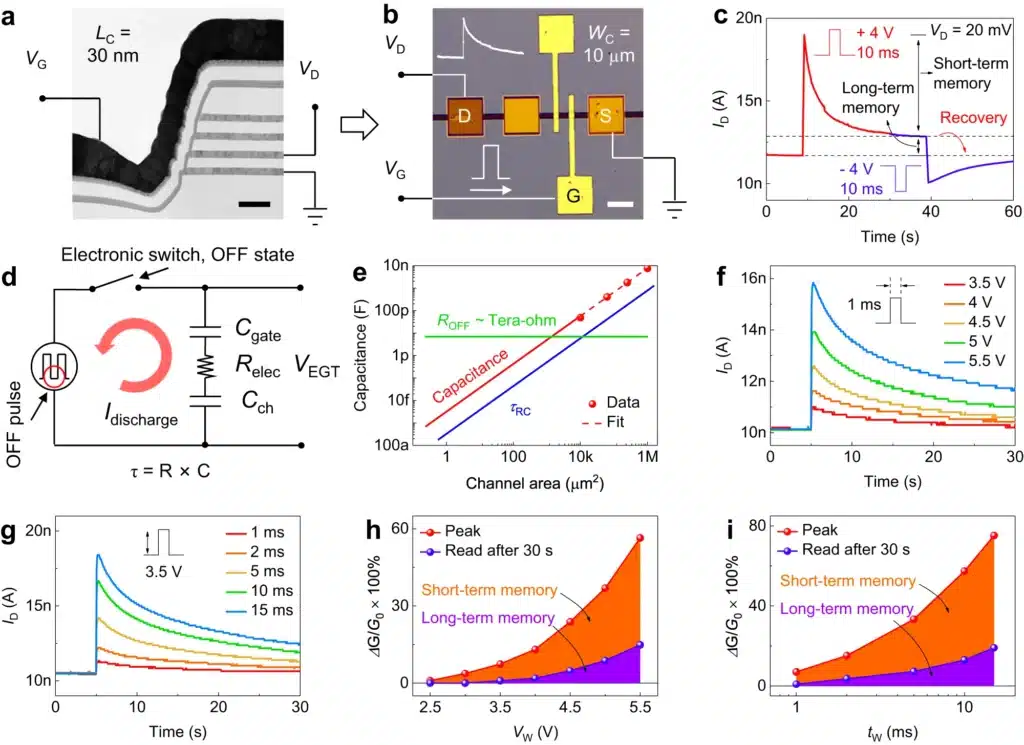Although multi-terminal neurotransistors mimic neurons, they have large footprint, high energy consumption and poor scalability.
A team of researchers, led by Prof. Shang Dashan, at the Institute of Microelectronics of Chinese Academy of Sciences (IMECAs) has developed a vertical EGT based neurotransistor. It exhibits short term memory, short channel and low energy consumption.
Neuromorphic computing seeks to mimic brain-like computing by replicating biological neural networks with electronic components. A key area of focus is dendritic computing, inspired by the branching structure of neurons, to boost the performance of artificial neural networks. Despite growing interest, creating artificial dendrites that match the human brain’s throughput and energy efficiency remains a challenge.
The study presented the development of a compact, low-power neurotransistor. This device is a vertical dual-gate electrolyte-gated transistor (EGT) featuring short-term memory characteristics, a 30 nm channel length, and boasts a record-low read power of approximately 3.16 femtowatts and a read energy comparable to biological systems at around 30 femtojoules.

Using this neurotransistor, researchers achieved the integration of dendrites and performed both digital and analog dendritic computing, particularly in coincidence detection tasks. Also, they explored the capabilities of neurotransistors in advanced brain-like functionalities.
This included the development of a hardware neural network capable of bio-inspired sound localization. The findings indicate that neurotransistor-based systems could be a significant step toward neuromorphic computing that matches the energy efficiency of the human brain.






